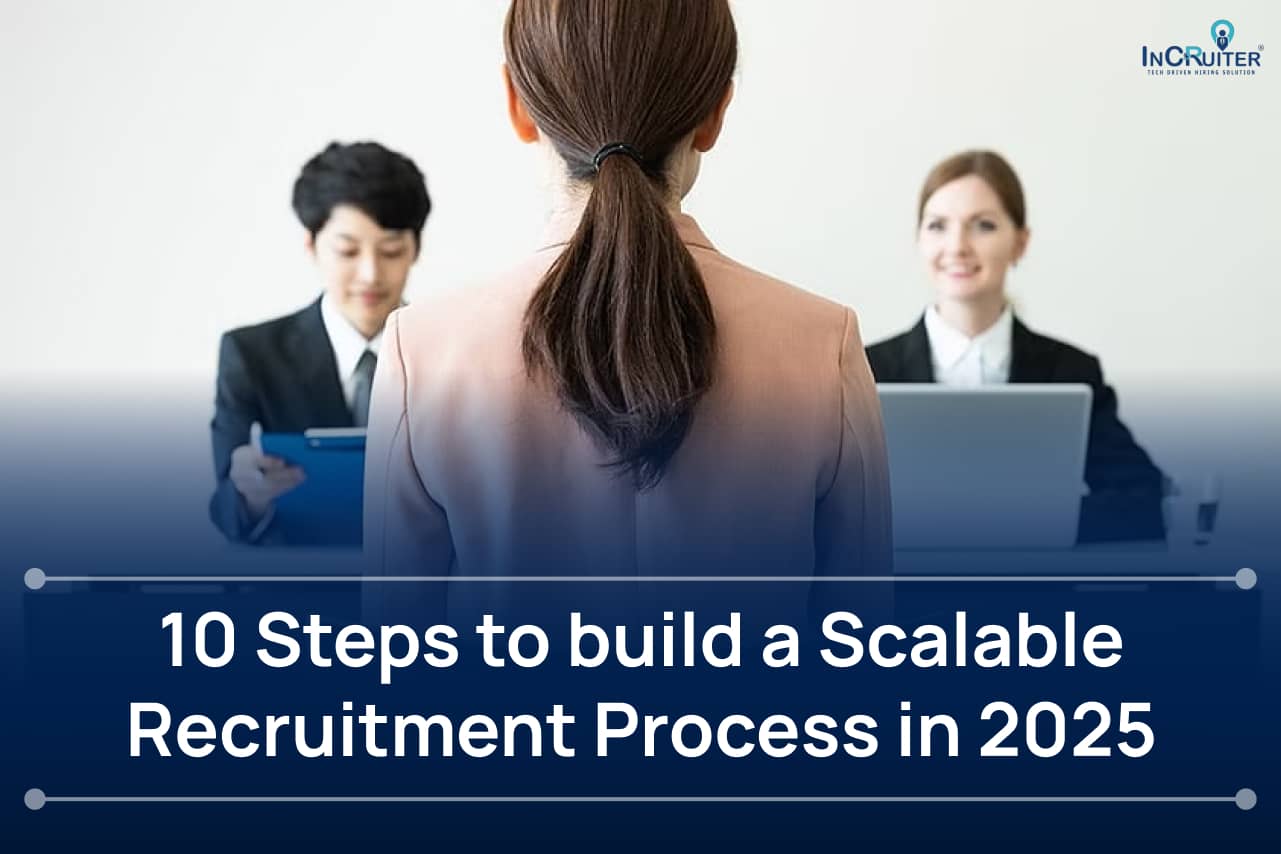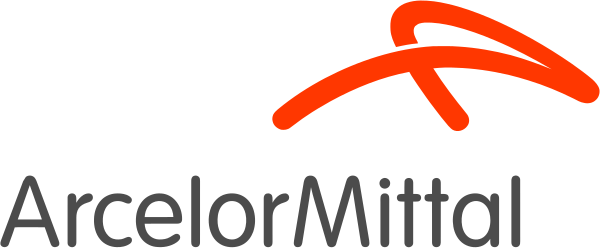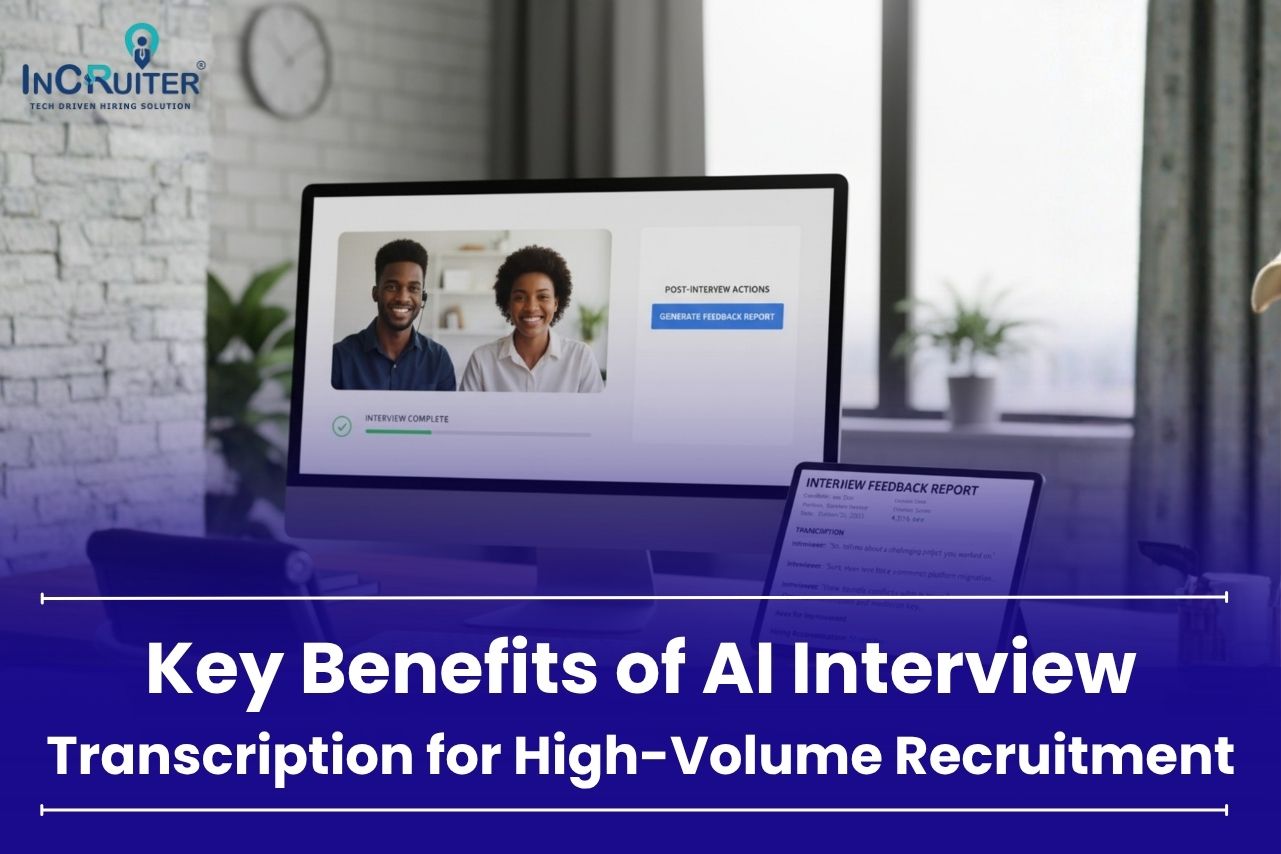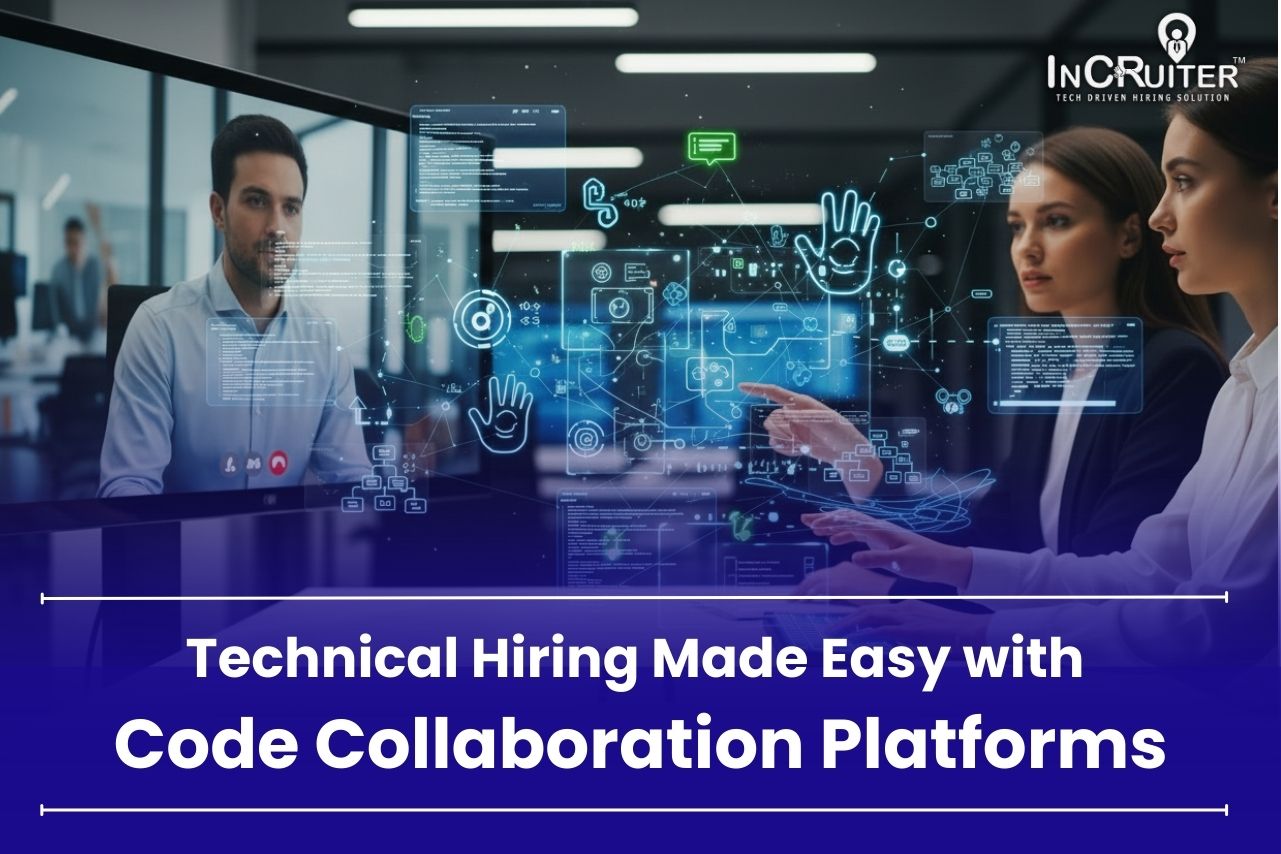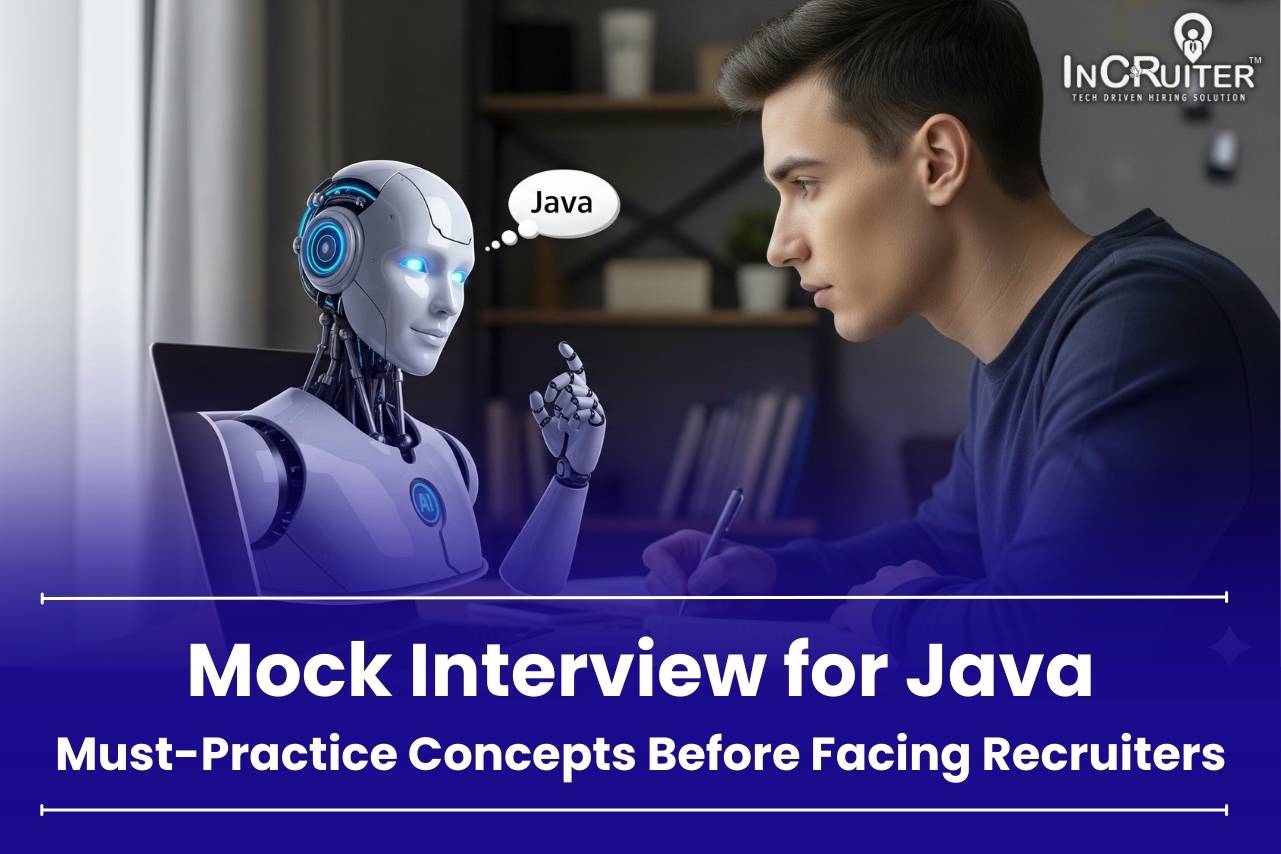Building a recruitment process that actually scales it’s like finding the right rhythm in a dance. We’re talking about a system that’s flexible, grows with the organization, and doesn’t start crumbling under pressure when your hiring needs spike. If you’re still stuck doing things the old-school way, 2025 is the perfect time to level up. According to LinkedIn’s 2023 Global Recruiting Trends report, 73% of recruiters say finding quality hires is tougher than ever. So, what’s the answer? A process that adapts to changes in company size, candidate expectations, and hiring technologies.
In this guide, we’ll break down ten essential steps for creating a recruitment process that’s not only efficient but truly scalable. We’ll cover everything from using AI-powered tools to optimizing for candidate experience all designed to keep you one step ahead in the hiring game. Ready to dive in? Let’s talk about the steps that’ll help you keep pace with the demands of modern recruitment!
10 Steps to Scale Your Recruitment Process Efficiently
Step 1: Define Clear Hiring Goals and KPIs
Starting off with clear hiring goals is like setting the GPS on a road trip. Without them, you’re lost. In a scalable recruitment process, every part needs to adapt as hiring needs grow, and goals are your way of guiding that growth. Here, scalability means being able to handle 5 open roles as efficiently as 50.
So, think about metrics like time-to-hire, cost-per-hire, and candidate quality as the pillars of your hiring system. These aren’t just numbers; they’re insights into how prepared your process is to expand without compromising quality or speed.
Let’s say you want to reduce your time-to-hire by 20%; that’s more than just a nice-to-have. It’s a crucial step in ensuring that, as you scale up, you’re not left scrambling to fill roles for weeks on end. The more specific these goals, the smoother your scaling journey.
Vague aims like “speed up hiring” or “find quality candidates” don’t cut it when volumes increase. You need something actionable, like reducing average time-to-hire for specific tech roles from 40 to 6 days, so you’re clear on the outcome as your recruitment scales.
And here’s where Key Performance Indicators (KPIs) come in. KPIs act like a progress dashboard, allowing you to track the effectiveness of each stage as it scales. From the number of applicants that move past screening to the overall candidate experience score, KPIs show you exactly where bottlenecks start to appear when volume rises.
For example, if cost-per-hire spikes with high applicant volume, it signals a need to fine-tune steps like candidate sourcing or screening to keep costs scalable. These metrics give you visibility and control, keeping your recruitment process effective no matter how big your hiring goals grow.
Step 2: Scale Hiring with Branding & Marketing Power
Scaling up hiring isn’t just about posting more job openings; it’s about building a magnetic pull that naturally draws the right talent to you. That’s where a strong employer brand and savvy recruitment marketing come in. Think of your employer brand as the personality that candidates get to know even before they apply. It’s not about having a catchy logo; it’s about showing people what your company really stands for.
When your brand clicks with candidates, they’re already interested and aligned before you even reach out, saving you time and cutting down on outreach. It’s like putting up a “work with us” sign that only attracts those who genuinely fit.
Consistency here is gold, especially if you’re growing fast. Candidates these days are detectives; they’re checking everything from your LinkedIn posts to Glassdoor reviews. If they find the same story across all channels, a story about a culture they want to be a part of. It builds trust and makes your hiring that much easier.
Recruitment marketing keeps this momentum going by reaching passive candidates those people who aren’t job-hunting right now but would jump for the right opportunity. By sharing real stories, team wins, and day-to-day moments on social media, you’re staying on their radar.
This way, when it’s time to scale up, you’re not starting from scratch; you’ve got a pipeline of talent already engaged and excited about your company. Employer branding and recruitment marketing together make for a powerful, scalable hiring engine that grows with you, drawing in aligned talent and setting you up for easy growth ahead.
Step 3: Develop a Centralized Recruitment Framework
Think of a centralized recruitment framework as the “control tower” for your hiring process. Instead of different departments managing their own hiring, one dedicated HR team coordinates it all. This setup keeps everything consistent like using the same high-quality tools across the board, from AI video interviews to automated scheduling.
No more scrambling to find the right software or process; a unified system gives each candidate the same top-notch experience. Centralized recruitment is about more than just saving time; it’s a one-stop shop for maintaining quality and compliance as you grow.
This team knows the ins and outs of legal and company policies, meaning fewer risks and more reliable results. Of course, a one-size-fits-all approach isn’t always a perfect fit. Different roles, like creative marketing and technical engineering, may need their own tweaks.
That’s why many companies go hybrid, mixing centralized control with department-specific flexibility. This way, you get the best of both worlds: a scalable, streamlined foundation that can flex when needed.
Step 4: Implement Applicant Tracking Systems (ATS)
When you’re scaling up your hiring, an Applicant Tracking System (ATS) becomes your recruitment command center. Think of it as your digital ally that streamlines the chaos of high-volume hiring into a single, manageable flow.
An ATS doesn’t just collect resumes, it intelligently sorts, categorizes, and prioritizes candidates, helping you zero in on top talent without sifting through endless profiles. So instead of drowning in spreadsheets or getting buried under a stack of resumes, you have a tool that lets you focus on candidates who truly fit the bill.
Beyond organization, an ATS brings automation to the table, tackling those tedious, repetitive tasks that chew up precious hours. It sends out acknowledgment emails, updates candidates on their progress, and even prescreens based on specific criteria you set. This automation is a game-changer because it means you’re not losing time to routine admin work.
Instead, your team can focus on actually connecting with the right candidates, making better hiring decisions without getting bogged down. The best part? As hiring needs grow, this system scales effortlessly, keeping you on top of things without adding stress.
Step 5: Incorporate Interview Scheduling Software
Scheduling interviews sounds simple until you’re managing dozens of candidates across different teams and time zones. Suddenly, it’s a logistical nightmare. That’s where interview scheduling software steps up, making sure things run smoothly without the “Sorry, something came up; can we reschedule?” headaches.
This software takes care of the back-and-forth. Candidates choose available slots that work for them, sync everyone’s calendars, and send reminders. No more endless emails or scrambling to reschedule; it’s seamless and quick.
In high-volume hiring, these tools aren’t just a convenience; they’re essential. Scheduling software keeps the process organized and professional, showing candidates you’re on top of the details and that their time matters.
And as your hiring scales, this software keeps the wheels turning, letting you focus on the real stuff, like evaluating skills and team fit. It’s not just about saving time; it’s about building a recruiting process that can grow effortlessly.
Also read: AI Video Interview for Automating the Initial Screening Process
Step 6: Adopt AI-Powered Screening Tools
AI-powered screening tools, like one-way video AI interview platforms, are the secret sauce for scaling your recruitment process without breaking a sweat. When high-volume hiring is on the table, these tools step up like pros, managing thousands of applications without missing a beat.
Here’s how they make life easier: these tools can send assessment links to a massive number of candidates in seconds. No waiting, no bottlenecks. Candidates complete tests or interviews at their convenience whether it’s 10 p.m. on a Tuesday or 6 a.m. on a Saturday. Flexibility for them, efficiency for you.
What’s even cooler? Immediate feedback. Candidates get insights into their performance right after the assessment, keeping them engaged and informed. For recruiters, this means faster decisions and a more streamlined hiring flow. No more hours spent reviewing resumes or coordinating schedules. Instead, you’re focusing on the best candidates from the start.
By automating this stage, AI tools save time, cut costs, and make scaling smooth and hassle-free. When the hiring game gets tough, these tools make sure your process stays sharp and on point, no matter how many roles you’re filling.
Step 7: Utilize Video Interviewing for Flexibility
Scaling up your hiring? Let video interviewing software do the heavy lifting. Whether your candidate is in Mumbai, Melbourne, or Montreal, these platforms make geography irrelevant. No more timezone headaches or awkward calendar clashes, just smooth, flexible interviews that keep the process moving.
For tech roles, video interviews are a different league altogether. They’re not just a face-to-face chat over Wi-Fi; we’re talking live coding sessions, pair programming, and virtual whiteboards where candidates show their skills in real-time. It’s the ultimate “prove it” moment, letting you see how they solve problems and think on their feet.
Now, here’s where it gets smart: AI insights built into these tools don’t just analyze what’s said they notice how it’s said. Tone, engagement, even non-verbal cues like focus and confidence get flagged, giving you a clear picture of both technical and soft skills. It’s like having an interview co-pilot for hiring decisions.
Video interviewing isn’t just convenient; it’s efficient, global, and insanely scalable. Whether you’re filling 5 roles or 50, it keeps your process sharp, your candidates engaged, and your hiring team sane.
Step 8: Leverage Data-Driven Recruitment Techniques
Data is your MVP when scaling recruitment; it shows you what’s working, what’s not, and where to level up. Every click, every interview score, every stage a candidate breezes through (or bails on) is like a breadcrumb leading you to a killer hiring process. The best part? Data doesn’t guess; it knows.
Think of it like this: machine learning and predictive analytics dig deep into your recruitment flow. They tell you which job boards are goldmines and where candidates hit speed bumps. That’s not just useful; it’s powerful. With these insights, you’re not just winging it; you’re making moves backed by solid intel.
And let’s talk about the candidate experience. Data doesn’t let you ghost anyone. Long response times? Awkward interview setups? The numbers will call you out. Fixing these hiccups means candidates walk away impressed, not annoyed, which matters big time when scaling up.
Want to make it even easier? Give a try Interview as a Service of InCruiter. They’ve got data-driven solutions that keep your hiring process sharp and scalable, even when you’re hiring faster than you thought possible. Smart hiring isn’t just a buzzword; it’s the secret to building a recruitment system that grows with you, not against you.
Step 9: Standardize Interview Processes
When hiring gets hectic, having a standardized interview process is like having your favorite playlist on repeat; it keeps things smooth, predictable, and on point. Scaling recruitment without a solid framework? That’s asking for chaos.
Start by setting up clear stages: screening, skill assessments, and culture-fit interviews. Keep it consistent across the board with structured questions and scorecards that let you compare apples to apples. No more “I just had a good feeling about them” hires stick to the criteria.
Now, let’s bring in the tech. AI-powered video interview software, live code collaboration platform, and automated evaluations do the heavy lifting, saving your team from drowning in paperwork and ensuring everyone’s playing by the same rules. It’s efficient, fair, and ready to handle high-volume hiring like a pro.
A standardized process doesn’t just make your team’s life easier; it shows candidates you’re organized and serious. As your hiring scales, this system keeps you from spinning plates and ensures every hire hits the mark. Keep it tight, keep it scalable, and keep crushing those recruitment goals.
Step 10: Continuously Optimize and Scale with Feedback
Scaling your recruitment process without feedback is like driving without a dashboard; you’re bound to miss something crucial. Feedback from candidates and hiring teams gives you the insight you need to identify what’s working, what’s not, and how to fix the gaps.
Start by gathering honest input. Are candidates ghosting after a certain stage? Maybe interview scheduling is dragging, or the assessment process isn’t hitting the mark. Small fixes, like tightening response times or tweaking interview questions, can work wonders. It’s all about spotting inefficiencies and making adjustments before they snowball into bigger problems.
As your hiring volumes grow, you need tools that help streamline this feedback loop. That’s where smart solutions like InCruiter come into play. With services like data-driven interview analysis and automated feedback systems, you can keep a pulse on candidate experience and process efficiency. The insights you gain make scaling easier, faster, and smoother.
Feedback isn’t just about fixing hiccups; it’s how you future-proof your recruitment process. Regular check-ins on KPIs and adapting to market trends ensure you’re not only keeping up but staying ahead. By continuously optimizing based on feedback, you’re building a recruitment engine that scales without missing a beat.
Also read: How a Coding Assessment Platform Enhances Developer Hiring
Closing Thoughts
Building a recruitment process that’s effective and scalable isn’t just about ticking boxes; it’s about creating a system that evolves with your company’s growth. By following these ten steps, you’re not just keeping up with hiring demands; you’re setting the stage to outpace the competition.
Ready to take your recruitment game to the next level? Let InCruiter handle the heavy lifting. From interview scheduling to AI-powered screening tools, our solutions are designed to help you scale effortlessly while keeping quality and efficiency front and center.






